 April 22, 2021 John E. Ross, KD8IDJ, Editor
| ||||||
ARRL, American Red Cross Renew Memorandum of Understanding ARRL and the American Red Cross (ARC) have renewed their long-standing Memorandum of Understanding (MOU) for another 5 years. The MOU spells out how ARRL and the American Red Cross will work cooperatively during a disaster response. "We are pleased to extend our partnership with the American Red Cross," ARRL President Rick Roderick, K5UR, said. "This agreement details how ARRL Amateur Radio Emergency Service® (ARES) The MOU calls on both parties to maintain open lines of communication and to share information, situation, and operation reports, as allowed to maintain confidentiality. They will also share "changes in policy or personnel relating to this MOU and any additional information pertinent to disaster preparedness, response, and recovery." ARRL and the American Red Cross also will encourage their respective units to discuss local disaster response and relief plans. They may further cooperate in joint training exercises and instruction. The Red Cross will encourage regions or chapters to participate in ARRL Field Day, the Simulated Emergency Test (SET), and other emergency exercises. "This agreement keeps in place the strong and mutually beneficial bond between ARRL and the ARC," said ARRL Director of Emergency Management Paul Gilbert, KE5ZW. "The Red Cross is a primary served agency for ARES teams, and it's important that we be able to work together toward common goals when responding to an emergency." The agreement points out that any ARRL volunteers who are interested in also becoming Red Cross volunteers should understand ARRL and the Red Cross may also cooperate in the sharing of equipment. A Statement of Cooperation between the two organizations at the local level may be developed separately from the MOU to spell out the role of each in providing services to communities during or after a disaster event. The new MOU was signed by Trevor Riggen, Senior Vice President, Disaster Cycle Services, American Red Cross, and by ARRL President Rick Roderick, K5UR. Career and Talent Opportunities at ARRL The digital transformation at ARRL is under way. A significant commitment of talent and investment is being made to develop a dynamic and responsive digital enterprise in areas of amateur radio
Opportunities are on the ARRL website at www.arrl.org/careers. Both technical and non-technical positions are available now, with more on the horizon. "Not only are there full-time positions available, but we will also occasionally be posting consulting or contract opportunities, as we are now for an IT project," Minster said. If you have amateur radio experience and a desire to work at ARRL, apply for one of the positions listed online, or submit your resume with a bio and cover letter to hr@arrl.org.
Camp for Young Radio Amateurs in the Americas is a Go for this Summer The long-awaited inaugural Youth on the Air (YOTA) camp for young amateur radio operators in North, Central, and South America will go forward this July. The camp, set for July 11 - 16, will take place at the National Voice of America Museum of Broadcasting in West Chester Township, Ohio, north of Cincinnati. The camp had to be postponed in 2020 due to the coronavirus pandemic. The ARRL Foundation is a contributing donor for 2021 YOTA Camp. "The camp will comply with COVID-19 restrictions and guidelines as set by the state of Ohio and the Centers for Disease Control, such as requiring the use of masks, distancing, and sanitizing stations," said Camp Director Neil Rapp, WB9VPG. "Attendees may be asked to take a COVID-19 test and/or self-quarantine prior to arrival, depending on the guidelines in place in July. The entire staff of the camp are either Rapp said that if the COVID-19 situation unexpectedly degrades in extreme fashion or the state declares that the camp is not safe to operate, the event will have to be postponed until 2022. "Due to the volatility of the public COVID-19 response, attendees are highly encouraged to avoid non-refundable tickets for transportation to Cincinnati," he advised. Twenty-eight campers from the US, Canada, Mexico, and Iceland have already signed up for the 30 available positions, but Youth on the Air will continue to accept applications through June 1. It costs nothing to apply. The camp's fee of $100 is not due until the applicant has been accepted. Should a potential camper not be able to afford the $100 fee, he or she may apply for a scholarship. The Youth on the Air website has camp details. This would mark the first camp ever for young radio amateurs in International Amateur Radio Union (IARU) Region 2. For additional information, contact Rapp. Read an expanded version. ARRL Podcasts Schedule
The On the Air and Eclectic Tech podcasts are sponsored by Icom. Both podcasts are available on iTunes (iOS) and Stitcher (Android), as well as on Blubrry -- On the Air | Eclectic Tech. FCC Issues Enforcement Advisory On April 20, the FCC's Enforcement Bureau issued a new Enforcement Advisory, repeating the admonishments contained in a January Advisory that no licensee or user of the Amateur or Personal Radio Services may use any radio equipment in connection with In addition, licensees should be aware that illegal operation in any service or band, including completely outside the amateur allocations, could potentially disqualify a person from holding any FCC license in any service, not just the Amateur Radio Service. Any amateur observing suspicious activity that might be of an illegal or criminal nature should report it to their local law enforcement office or the FBI. National Hurricane Conference Set for June 14 - 17 The National Hurricane Conference will take place June 14 - 17 in New Orleans, Louisiana. The primary goal of the National Hurricane FEMA/Emergency Management Institute (EMI) training courses are offered, as well as workshops and training sessions on a wide range of topics for hurricane responders. General session speakers will include many of the nation's top experts in hurricane-related issues. Radio amateurs involved in hurricane response are invited. Register online. Amateur Radio Session Scheduled for Tuesday Afternoon The traditional Amateur Radio Workshop is scheduled for Tuesday, June 16, 1:30 - 5 PM CDT and will be held virtually. Rob Macedo, KD1CY, Director of Operations, VoIP Hurricane Net, will moderate. The Macedo has served as an Emergency Coordinator and District Emergency Coordinator, and is currently Section Emergency Coordinator for the ARRL Eastern Massachusetts Section. He will focus on the National Weather Service and the SKYWARN program and the relationship between Eastern Massachusetts ARES and the Massachusetts EMA and FEMA. Macedo has served as SKYWARN Coordinator for NWS Boston/Norton since 1996. National Hurricane Center's Annual WX4NHC Station Test is May 29 WX4NHC at the National Hurricane Center (NHC) in Miami will conduct its annual on-the-air test on Saturday, May 29, 1300 - 2100 UTC. The traditional exercise takes place each year ahead of the Atlantic Hurricane Season, which runs June 1 - November 30. This hurricane season, WX4NHC operators plan to be working remotely "Last year's season was an incredibly busy one, but the remote WX4NHC operations were successful, collecting many important reports via the Hurricane Watch Net, VoIP Hurricane Net, Winlink, the online hurricane report form, as well as many other means and modes," said WX4NHC Assistant Coordinator Julio Ripoll, WD4R. Hurricane Preparedness Week is May 9 - 15. Radio amateurs in hurricane-prone areas of the US should have an emergency plan in place before June 1. Now is the time, too, to harden and prepare your station for power outages. This means having multiple sources of back-up power, including batteries and, perhaps, a gas-powered generator. Test them now. Ensure your ability to take down and install antennas quickly and efficiently when storms threaten your area. Hurricane Season 2021 nets to know include the Hurricane Watch Net (HWN) on 14.325 and 7.268 MHz, the Caribbean Emergency Weather Net (CEWN) on 3.815 and 7.188 MHz, the Marine Maritime Services Net (MMSN) on 14.300 MHz, the Intercontinental Net on 14.300 MHz, and the Salvation Army Team Emergency Radio Network (SATERN) on 14.260 MHz. -- Thanks to The ARRL ARES Letter ARRL Learning Network Webinars Visit the ARRL Learning Network (a members-only benefit) to register, check on upcoming webinars, and to view previously recorded sessions. HF Noise Mitigation -- ARRL Northwestern Division Director Mike Ritz, W7VO, on Thursday, May 6 at 3:30 PM EDT (1930 UTC) An educational seminar to help both new and experienced HF operators who find themselves plagued with noise. We'll learn what W1AW Antenna Farm -- W1AW Station Manager Joe Carcia, NJ1Q; Tuesday, May 18, at 1 PM EDT (1700 UTC) Experience a bird's-eye view and description of the antennas used by W1AW for the station's scheduled transmissions and visiting operator activity. All the antennas used at W1AW are single-band Yagis. Viewers will also see the 5 GHz antennas that are part of W1AW's AREDN system. These Learning Network presentations are sponsored by Icom. ARRL members may register for upcoming presentations and view previously recorded Learning Network webinars. ARRL-affiliated radio clubs may also use the recordings as presentations for club meetings, mentoring new and current hams, and discussing amateur radio topics. The ARRL Learning Network schedule is subject to change. Yasme Foundation Releases Chronicles of Amateur Radio DX History The Yasme Foundation has released two chronicles of amateur radio DX history that make for compelling reading -- a downloadable edition of Yasme: The Danny Weil and Colvin Radio Expeditions, by Jim Cain, K1TN, and the extended article Danny Weil -- a Dreamer of Distant Lands Who Took the Amateur Radio Trip of a Lifetime, by Martti Laine, OH2BH. Cain's 324-page history, initially published by ARRL in 2003 and now out of print, is available for the first time in a downloadable format at no "Even after years of writing a DX newsletter and then publishing dozens of feature articles in QST, I guess I hadn't got it out of my system yet," Cain said, recounting the book offer that was too good to pass up. "I had a lot of words and even entire sentences left in me." Cain's book documents the lives and DX adventures of Danny Weil, VP2VB -- of Yasme fame -- and of Iris and Lloyd Colvin, W6QL and W6KG. It also offers a look into the DXCC program from the 1950s through 2000. Between 1955 and 1963, Weil sailed to various exotic locations in his yawl Yasme (four different boats in all) to operate, escaping dangerous and life-threatening disasters. Another ham radio legend, Dick Spenceley, KV4AA, created the Yasme Foundation to provide funding for Weil's excursions. He also prompted Weil's fundraising tour in 1956 to more than 100 ham radio clubs and gatherings. Weil's wife, Naomi, accompanied him on some of his maritime journeys to rare DX venues. In 1964, the Colvins took up the Yasme banner, visiting 223 countries Yasme Foundation President Ward Silver, N0AX, said Cain's book, "along with recounting some fascinating history, explains a lot about how the structures of modern DXing emerged, introducing many of us to the colorful characters who populated the DX scene at the time." Laine's article provides even more details about the life of Danny Weil and his DXpeditions, drawing from Weil's personal recollections as well as Cain's book. The article's web page includes links to a collection of Weil's QSL cards and an audio interview of Weil at age 80. In 1920, an international group of operators, including Laine, conducted a Yasme Memorial Expedition using Weil's reissued call sign, VP2VB. The Yasme Foundation today supports various projects relating to amateur radio, emphasizing its development in emerging countries and encouraging youth participation. Amateur Radio in the News ARRL Public Information Officers, Coordinators, and many other member-volunteers help keep amateur radio and ARRL in the news.
Share any amateur radio media hits you spot with us. Radio Amateur Helps Rescuers to Locate Lost Hiker The keen and practiced eye of ARRL member Ben Kuo, AI6YR, helped to guide rescuers to a hiker stranded on a mountainside on April 12. Hiker Rene Compean, 45, had spent the night in a remote region of the Angeles National Forest after getting in a tough spot. After a concerned friend reported Compean missing on Monday, the Los Angeles County Sheriff's Department dispatched search-and-rescue (SAR) teams. Although amateur radio played no direct role in "This is actually very applicable to being a SOTA activator -- map, navigation skills," Kuo told ARRL. "Also, understanding RF propagation was key to this. The SAR teams were searching the other side of the mountain, where there is no cell signal." Kuo knew that from having hiked there before. As Kuo described it, Compean was found between four SOTA peaks. SAR teams were deployed in the Mount Waterman area of the San Gabriel Mountains to find the hiker. According to the LA Sheriff's Department, a low-flying helicopter team spotted him Tuesday afternoon between Triplet Rocks and the east bump of Twin Peaks in the San Gabriel Mountains, and he was airlifted to safety with no serious injuries. Kuo pointed the rescuers to the likely search area by matching satellite images Compean had transmitted over Twitter. Kuo told the Los Angeles Times that he has an odd hobby of looking at photos and determining where they had been taken. He was able to employ his skill to determine the hiker's likely location using a tiny photo the hiker posted on Twitter that shows his legs and the valley below. As the newspaper reported on April 15, "When [Kuo] saw the photo posted by the Sheriff's Department, he set to work pulling publicly available satellite images and matching them to the vegetation and terrain below the hiker's legs." Kuo's eye was good. He sent authorities the GPS coordinates of the most likely area, and the rescue team found Compean less than a mile from that location. As the LA Times reported, the area where Compean was located on steep slopes and very difficult to access, requiring advanced climbing skills. The Sheriff's Department credited Kuo with saving them hours of fruitless searching. Kuo said this was the first time he'd been involved in a rescue like this one. Woody Brem, K3YV, is the 2020 Bill Orr, W6SAI, Technical Writing Award Winner The ARRL Foundation Board of Directors has selected Ellwood "Woody" Brem, K3YV, of Spring Mills, Pennsylvania, as the winner of the 2020 Bill Orr, W6SAI, Technical Writing Award for his article, "'Leaky' Antenna Switches," which appeared in the March 2020 issue of QST. The Foundation Board acted on a recommendation from the QST editorial staff in selecting the recipient at its January 27 annual meeting.
The Bill Orr, W6SAI, Technical Writing Award is bestowed each year upon the author of an outstanding QST article or series on new or existing technologies, or on methods or means of amateur communication. Articles must be written in an easily understood style, worthy of the Bill Orr stamp of approval, encourage interest, and expand knowledge and understanding of amateurs who may lack a strong technical background. The QST editorial staff serves as the selection panel and recommends the winner from a review of the year's QST articles to the ARRL Foundation Board for final approval. Established by ARRL in 1973, the ARRL Foundation is an independent IRS 501(c)(3) organization that administers programs to support the amateur radio community. Read an expanded version. Announcements April 22
The K7RA Solar Update Tad Cook, K7RA, Seattle, reports: Four new sunspots emerged this week and were visible on every day of the April 15 - 21 reporting period. Average daily sunspot number surged from 7 to 35.1, while average daily solar flux increased from 75 to 78. Due to seemingly constant solar wind, average planetary A index rose from 5.1 to 16.4, and average daily middle latitude A index went from 4.1 to 13.
Predicted planetary A index is 5 on April 22; 10 on April 23 - 24; 5 on April 25 - 26; 8 on April 27 - 28; 5 on April 29 - May 3; 15 on May 4; 5 on May 5 - 7; 8 on May 8; 5 on May 9 - 10; 8, 12, 20, 30, 15, 12, and 8 on May 11 - 17; 5 on May 18 - 19, and 8 and 12 on May 20 - 21. Frank Donovan, W3LPL, says the long-anticipated significant increase in Solar Cycle 25 activity may have begun on April 19. "As a result, 30- and 20-meter nighttime propagation and 17- and 15-meter daytime propagation is likely to be enhanced through at least April 26. The solar flux index (SFI) is likely to remain at 85 or higher through at least April 26 due to two active regions on the sun's surface, 2816 and 2817, containing 16 sunspots in all. Two additional active solar regions on the far side of the sun are expected to rotate into view later this week, possibly increasing the SFI and extending enhanced propagation through late April. See Donovan's article, "What to Expect During the Rising Years of Solar Cycle 25," in the May 2021 issue of QST. Donovan says the new sunspots are fading faster than he'd hoped, but the steady trend of increasing sunspots should soon sustain the solar flux above 80. Sunspot numbers for April 15 - 21 were 22, 44, 28, 15, 36, 54, and 47, with a mean of 35.1. The 10.7-centimeter flux was 72, 76.5, 75.3, 78.1, 85.9, 80, and 78, with a mean of 78. Estimated planetary A indices were 13, 19, 29, 16, 18, 13, and 7, with a mean of 16.4. Middle latitude A index was 11, 15, 20, 13, 15, 10, and 7, with a mean of 13. A comprehensive K7RA Solar Update is posted Fridays on the ARRL website. For more information concerning radio propagation, visit the ARRL Technical Information Service, read "What the Numbers Mean," and check out K9LA's Propagation Page. A propagation bulletin archive is available. For customizable propagation charts, visit the VOACAP Online for Ham Radio website. Share your reports and observations. In Brief...
Just Ahead in Radiosport
Upcoming ARRL Section, State, and Division Conventions Many conventions and hamfests have been canceled or postponed due to the coronavirus pandemic. Check the calendar of canceled events on the ARRL website.
Find conventions and hamfests in your area.
ARRL -- Your One-Stop Resource for . .
Subscribe to...
Free of charge to ARRL members...
| ||||||
(1).jpg) volunteers will interface with Red Cross personnel within the scope of their respective roles and duties whenever the Red Cross asks ARES volunteers to assist in a disaster or emergency response."
volunteers will interface with Red Cross personnel within the scope of their respective roles and duties whenever the Red Cross asks ARES volunteers to assist in a disaster or emergency response." that a background check is a requirement. Although ARES has no background check requirement, radio amateurs who register as Red Cross volunteers must abide by the Red Cross's background check requirement.
that a background check is a requirement. Although ARES has no background check requirement, radio amateurs who register as Red Cross volunteers must abide by the Red Cross's background check requirement..jpg) innovation and member engagement. This initiative is opening opportunities for experienced amateur radio enthusiasts to make ARRL the next stop in their careers. "ARRL is where vocation and avocation collide," said ARRL CEO David Minster, NA2AA. "We are looking for people with passion, energy, drive, and talent to take ARRL to the next level."
innovation and member engagement. This initiative is opening opportunities for experienced amateur radio enthusiasts to make ARRL the next stop in their careers. "ARRL is where vocation and avocation collide," said ARRL CEO David Minster, NA2AA. "We are looking for people with passion, energy, drive, and talent to take ARRL to the next level."-logo-with-legend.jpg) fully vaccinated or will finish the vaccine series by the end of April. Most volunteers have also indicated that they are fully vaccinated." Rapp said some activities may need to be modified to work with the COVID-19 precautions.
fully vaccinated or will finish the vaccine series by the end of April. Most volunteers have also indicated that they are fully vaccinated." Rapp said some activities may need to be modified to work with the COVID-19 precautions..jpg) The latest episode of the On the Air podcast (Episode 16) focuses on Parks On The Air (POTA), one of the most popular activities taking place in amateur radio today. We chat with Audrey Hance, KN4TMU, a relatively new ham who recently operated from Panther Creek State Park in Tennessee.
The latest episode of the On the Air podcast (Episode 16) focuses on Parks On The Air (POTA), one of the most popular activities taking place in amateur radio today. We chat with Audrey Hance, KN4TMU, a relatively new ham who recently operated from Panther Creek State Park in Tennessee..jpg) The latest edition of Eclectic Tech (episode 32) features a discussion about 10 GHz activity with QST "Microwavelengths" columnist Paul Wade, W1GHZ. Also, the fascinating story of "Trainphone."
The latest edition of Eclectic Tech (episode 32) features a discussion about 10 GHz activity with QST "Microwavelengths" columnist Paul Wade, W1GHZ. Also, the fascinating story of "Trainphone.".jpg) unlawful activities of any nature. The Commission specifically cautioned that individuals found to have used radios in connection with any illegal activity are "subject to severe penalties, including significant fines, seizure of the offending equipment, and in some cases, criminal prosecution."
unlawful activities of any nature. The Commission specifically cautioned that individuals found to have used radios in connection with any illegal activity are "subject to severe penalties, including significant fines, seizure of the offending equipment, and in some cases, criminal prosecution."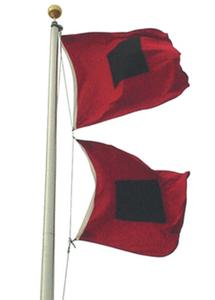 Conference is to improve hurricane preparedness, response, recovery, and mitigation in the US, the Caribbean Basin, and the Pacific. The conference serves as a national forum for federal, state, and local officials to exchange ideas and recommend new policies to improve emergency management.
Conference is to improve hurricane preparedness, response, recovery, and mitigation in the US, the Caribbean Basin, and the Pacific. The conference serves as a national forum for federal, state, and local officials to exchange ideas and recommend new policies to improve emergency management. workshop will include Julio Ripoll, WD4R, Assistant Coordinator of the National Hurricane Center's WX4NHC.
workshop will include Julio Ripoll, WD4R, Assistant Coordinator of the National Hurricane Center's WX4NHC.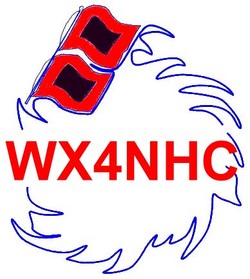 again; the NHC will maintain all CDC pandemic protocols until the end of 2021. Only the chief meteorologist and staff may enter the building.
again; the NHC will maintain all CDC pandemic protocols until the end of 2021. Only the chief meteorologist and staff may enter the building.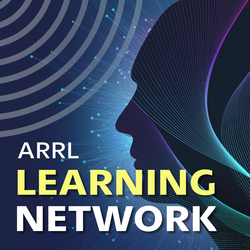 "noise" is, discuss the various noise sources, and talk about how to mitigate those noises using a variety of techniques.
"noise" is, discuss the various noise sources, and talk about how to mitigate those noises using a variety of techniques.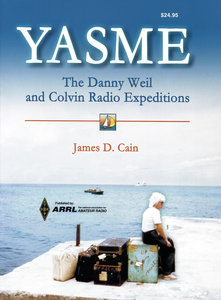 cost. It includes some as-originally-intended revisions to the text as well as a new introduction.
cost. It includes some as-originally-intended revisions to the text as well as a new introduction.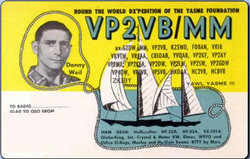 and operating from more than half of them before their final expedition in 1993.
and operating from more than half of them before their final expedition in 1993.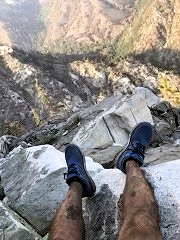 the rescue, Kuo cited his enthusiasm for technology and ham radio satellites and for Summits on the Air (
the rescue, Kuo cited his enthusiasm for technology and ham radio satellites and for Summits on the Air (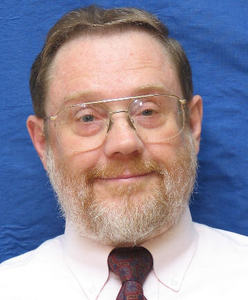 "I am truly honored," Brem said. "Bill Orr was and is one of my inspirations. I have read his books for many years and have always tried to live up to his high standards. I'd like to think Bill Orr helped me along to a wonderful career in electrical engineering."
"I am truly honored," Brem said. "Bill Orr was and is one of my inspirations. I have read his books for many years and have always tried to live up to his high standards. I'd like to think Bill Orr helped me along to a wonderful career in electrical engineering."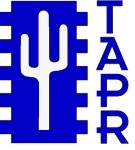 TAPR
TAPR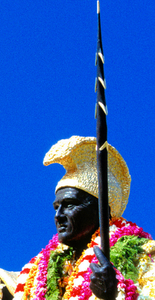 prefixes were established.
prefixes were established.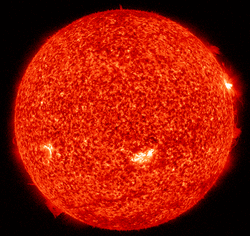 Predicted solar flux is 80 on April 22; 78 on April 23 - 24; 76 on April 25 - 27; 74 on April 28; declining suddenly on April 29 - May 2 to 68; 70 on May 3; 72 on May 4 - 9; 75 on May 10 - 15; 78 on May 16; 75 on May 17 - 18; 72 on May 19, and 70 on May 20 - 23.
Predicted solar flux is 80 on April 22; 78 on April 23 - 24; 76 on April 25 - 27; 74 on April 28; declining suddenly on April 29 - May 2 to 68; 70 on May 3; 72 on May 4 - 9; 75 on May 10 - 15; 78 on May 16; 75 on May 17 - 18; 72 on May 19, and 70 on May 20 - 23. The Caribbean Emergency and Weather Net (
The Caribbean Emergency and Weather Net (.jpg)








